Fonds Municipal D’Art Contemporain
Highlights from the municipal collection at the 2012 FIAC Exhibition

While browsing the 2012 FIAC exhibition in Paris last month, we were thrilled to discover the Fonds Muncipal D’Art Contemporain (FMAC) or Municipal Fund for Contemporary Art, which was showing their 2012 purchases. As opposed to private galleries, FMAC is free from market constraints and selling perspectives. It pursues a purchasing policy aimed at collecting the most remarkable achievements of the new generation to curate a testimony to the art of our time.
Mainly focused on urban topics, the collection has no proper space in a dedicated gallery or museum—but rather, the pieces are exhibited in public places throughout the city so that Parisians can see them in their everyday life. The purpose of this placement is, of course, easy accessibility to contemporary art for the largest possible audience. Attending the fair for the ninth year, FMAC is the only public institution represented there.
FMAC had on display 30 pieces purchased in 2012 which illustrate major current themes while proving an unexpected coherence among them. Video served as a common medium, with darkness the pervasive atmosphere and a fading, disappearing window a recurring point of exploration.
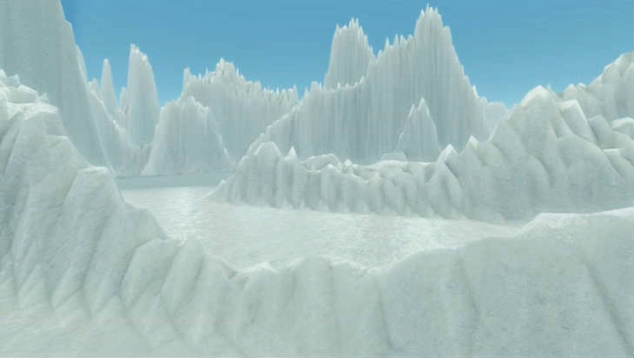
“Hisland”, by Grégory Chatonsky appears to depict the high, frozen cliffs and snowy crevasses of the Himalayas, but on closer inspection one realizes this is not the case at all. The gaps and tracks are a stunning trip into the artist’s fingerprints, obtained by a video game processor calculation that is able to create a topographic impression transforming the almost invisible fingerprints into a fantastic and impressive glacial landscape.
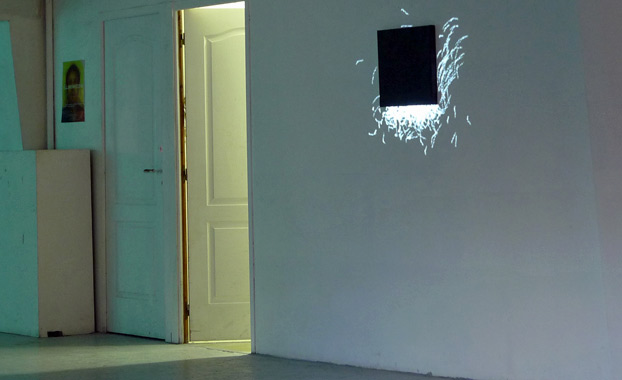
Also working with video and computerized calculation, Antoine Schmitt is the author of a video generative installation called “The Black Pixel”. It consists of an explosion of sparkling white pixels compulsively bouncing around and into a static black square—the black pixel—meant as a reflection of the artist’s study of programmed movement.
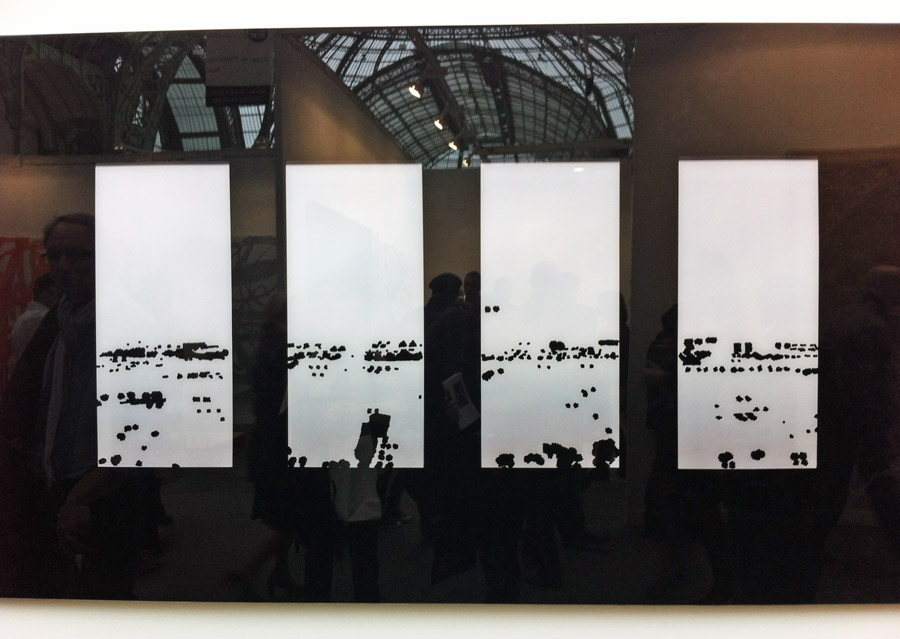
“I was there, Power Blackout” by Renaud Auguste-Dormeuil also shows a type of pixellated assortment onto a screen, exploring the possibility of creating an image out of darkness instead of light. In this piece, installed at night by a window with a panoramic view of Rome, the artist put black stickers on every visible dot of light, occulting each and every beam, one by one. The result is a totally dar, negative night landscape, where the only vague light comes from the never completely black sky over our big cities.

“Windows” is also the subject of the poetic so-called installation by Laurent Pernot. Using the video to project the picture of a window on floating transparent curtains blown by a ventilator, a sound track reminding wind gusts, the artist succeeds in creating a mysterious atmosphere, mixing inside and outside.
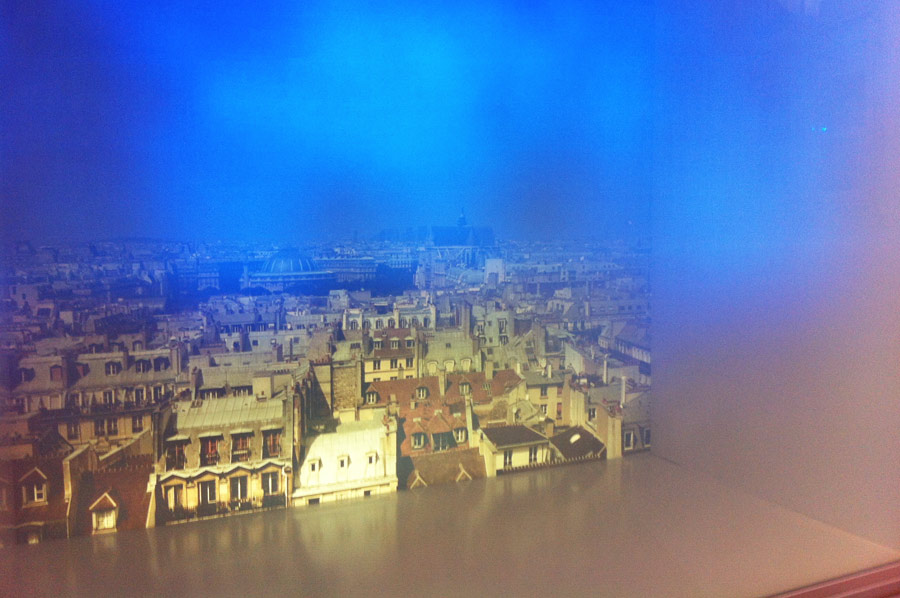
Another way to see a large city landscape is proposed by Helen Evans and Heiko Hansen in their “Ozone Field” featuring the ozone cloud over Paris. Taking advantage of the Parisian atmospheric measuring system, they reuse the data to materialize the floating particles with intense colors and take the work from impressive to apocalyptic.
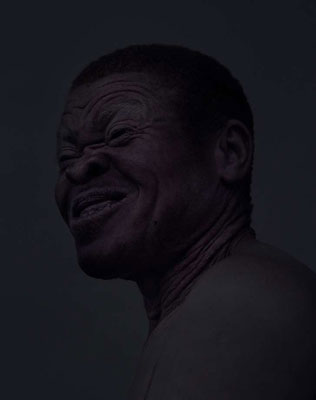
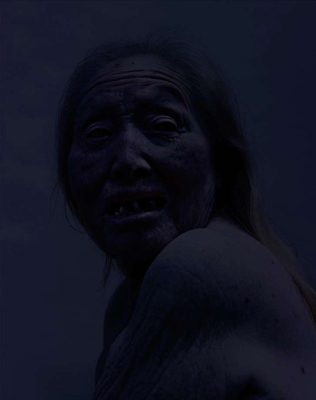
Our favorite, playing on a reveal of troubling images from darkness, was the double portrait “André-Marie et Victoria” by Eric Nehr. In this work, the artist took the photos of two albino people from cultures where albinos are banned—one from an American-Indian tribe, the other from Africa—and thought to be Satanic. The artist chose to give these individuals pigment, but, as they are forced to hide, he plunged them into darkness, melting the image and the background in the same color and tone. In addition, the finish of the pictures is glassy so that, at first, the viewer sees himself in the portrait, and is led to identify himself in these persecuted albino faces.
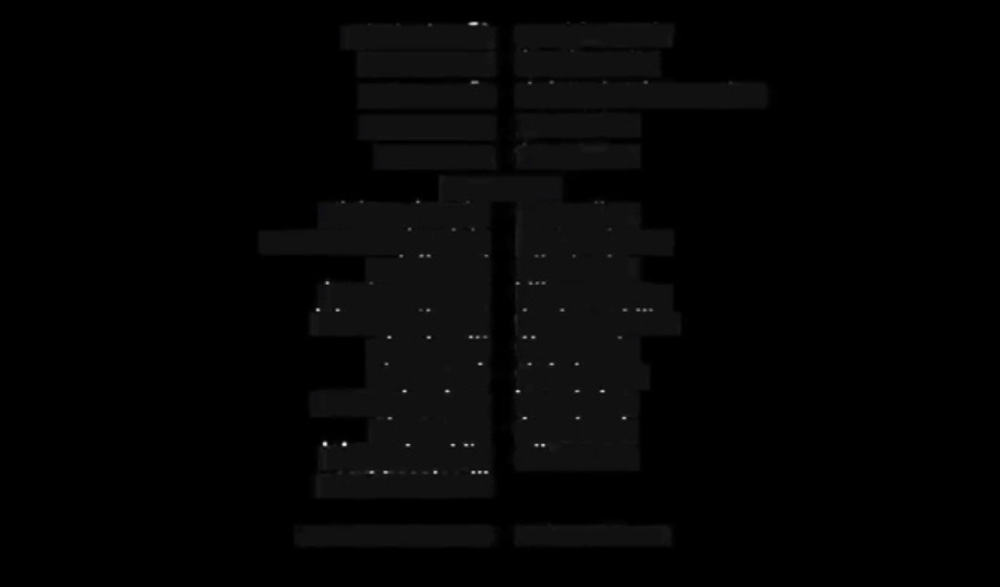
With “End Credits”, Achraf Touloub is also questioning identity and the return to darkness by erasing all the names in a set of film credits. The credits slowly scroll down, but all the names appear as a succession of black stripes. The somewhat haphazard blocking creates the effect of sparkling stars, proposing the artistic idea that erasing text forms an image instead. The piece also deals with the removal of names in a society where they play a significant role as trademarks.
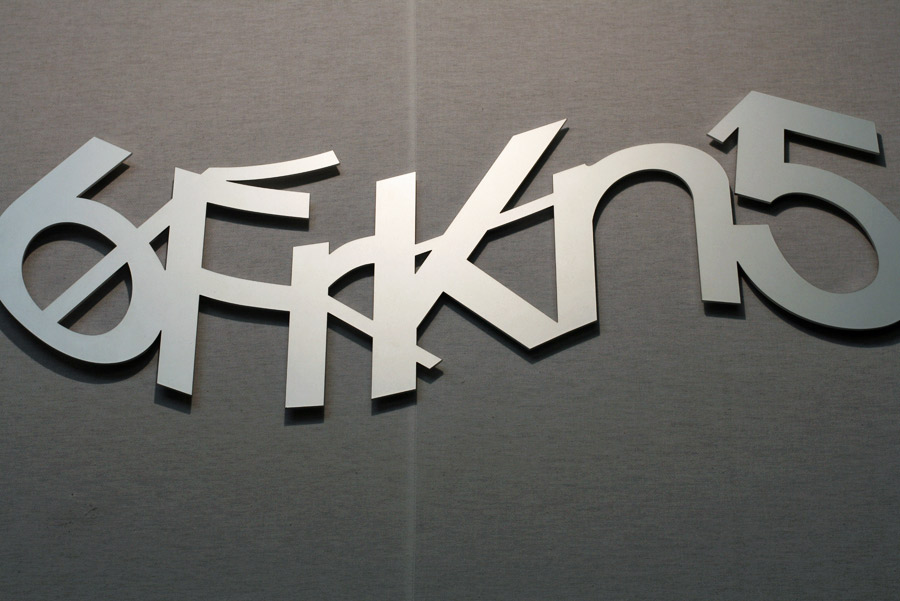
Merging the influence of computers, thoughts on writing and the questioning of identity, “Are You Human?” by Aram Bartholl features a series of metallic Captcha test words. He plays with the paradoxical status of such artificial intelligence, which delivers meaningless messages to a human to avoid spamming and other machine tracks, counting on the idea that only humans can read this writing.
To learn more about FMAC and their collection visit their website.
Images courtesy of the artists and Isabelle Doal












